I am trying to generate a quad mesh grid for an annular disc geometry. I was able to generate this mesh for a rectangular shape using gmsh:
import gmsh
import sys
gmsh.initialize()
gmsh.model.add("t1")
lc = 1e-2
p1 = gmsh.model.geo.addPoint(0, 0, 0, lc, 1)
p2 = gmsh.model.geo.addPoint(0.02, 0, 0, lc, 2)
p3 = gmsh.model.geo.addPoint(0.02, 0.02, 0, lc, 3)
p4 = gmsh.model.geo.addPoint(0, 0.02, 0, lc, 4)
gmsh.model.geo.addLine(p1, p2, 1)
gmsh.model.geo.addLine(p2, p3, 2)
gmsh.model.geo.addLine(p3, p4, 3)
gmsh.model.geo.addLine(p4, p1, 4)
gmsh.model.geo.addCurveLoop([1, 2, 3, 4], 1)
gmsh.model.geo.addPlaneSurface([1], 1)
# the number of synchronization points.
gmsh.model.geo.synchronize()
gmsh.option.setNumber("Mesh.MeshSizeMin", 0.001)
gmsh.option.setNumber("Mesh.MeshSizeMax", 0.003)
gmsh.model.mesh.setAlgorithm(2,1,8)
gmsh.model.mesh.generate(2)
gmsh.model.mesh.recombine()
# ... and save it to disk
gmsh.write("rect.stl")
if '-nopopup' not in sys.argv:
gmsh.fltk.run()
gmsh.finalize()
I want to generate a quad mesh grid like this:
Here is the code for generating the mesh for the disc (I have included a quarter of the disc for simplification):
import gmsh
import sys
# Before using any functions in the Python API, Gmsh must be initialized:
gmsh.initialize()
gmsh.model.add("t1")
lc = 1e-2
p1 = gmsh.model.geo.addPoint(0, 0, 0, lc, 1)
p2 = gmsh.model.geo.addPoint(0.02, 0, 0, lc, 3)
p3 = gmsh.model.geo.addPoint(0, 0.02, 0, lc, 2)
p4 = gmsh.model.geo.addPoint(0, 0.01, 0, lc, 5)
p5 = gmsh.model.geo.addPoint(0.01, 0, 0, lc, 4)
p6 = gmsh.model.geo.addPoint(-0.02, 0, 0, lc, 6)
p7 = gmsh.model.geo.addPoint(-0.01, 0, 0, lc, 7)
p8 = gmsh.model.geo.addPoint(0, -0.02, 0, lc, 8)
p9 = gmsh.model.geo.addPoint(0, -0.01, 0, lc, 9)
#
gmsh.model.geo.addCircleArc(p2, p1, p3, 1)
gmsh.model.geo.addLine(p3, p4, 2)
gmsh.model.geo.addCircleArc(p4, p1, p5, 3)
gmsh.model.geo.addLine(p5, p2, 4)
gmsh.model.geo.addCurveLoop([1, 2, 3, 4], 1)
gmsh.model.geo.addPlaneSurface([1], 1)
# the number of synchronization points.
gmsh.model.geo.synchronize()
gmsh.option.setNumber("Mesh.MeshSizeMin", 0.001)
gmsh.option.setNumber("Mesh.MeshSizeMax", 0.003)
gmsh.model.mesh.setAlgorithm(2,1,8)
gmsh.model.mesh.generate(2)
gmsh.model.mesh.recombine()
# ... and save it to disk
gmsh.write("disc.stl")
if '-nopopup' not in sys.argv:
gmsh.fltk.run()
gmsh.finalize()
which results in an irregular mesh:

How do I accomplish the same mesh grid in picture 2?

